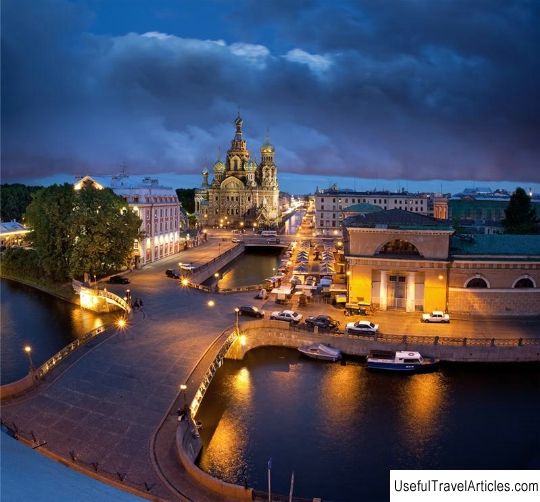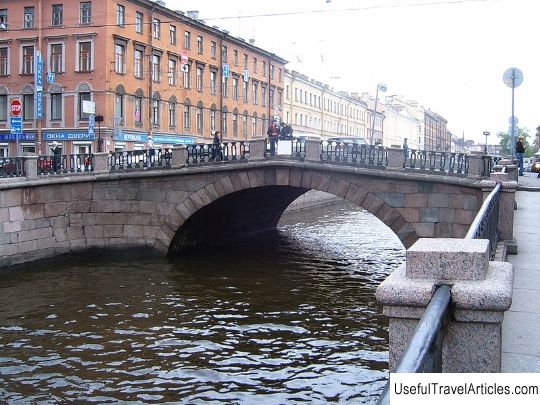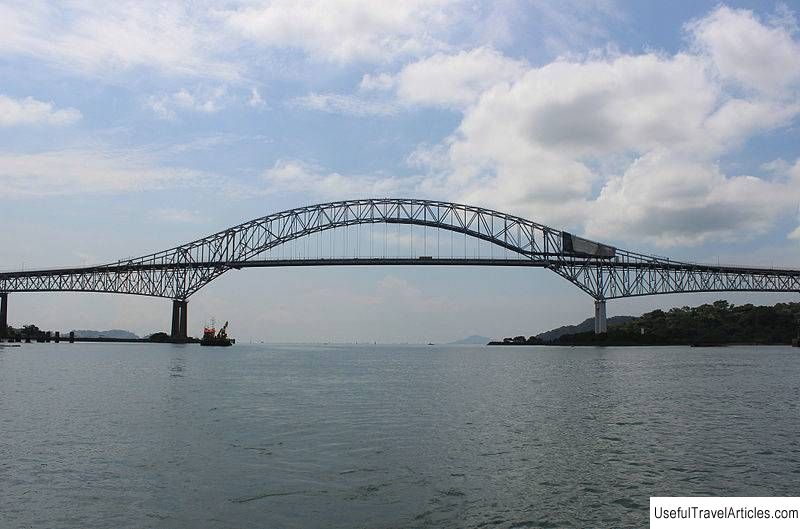Triple bridge description and photo - Russia - Saint Petersburg: Saint Petersburg
Rating: 8,2/10 (3049 votes) 
Triple bridge description and photo - Russia - St. Petersburg: St. Petersburg. Detailed information about the attraction. Description, photos and a map showing the nearest significant objects. Photo and descriptionAn unusual bridge is located at the place where the Griboyedov Canal and the Moyka River join. Three bridges converge at one point: Malo-Konyushenny, Teatralny and Pedestrian (at the end of the 20th century it was called the False Bridge). The Triple Bridge belongs to the cultural heritage sites of the Russian Federation. The initial name of the Teatralny Bridge is Red Bridge. It was the first bridge across the Catherine Canal. Nearby, on the Field of Mars, there was a wooden theater, in honor of which the Red Bridge was renamed Teatralny. The theater was built in 1770, it was called the Theater on Tsaritsyno Meadow. Fonvizin's premiere "Nedorosol" was staged in this theater. In 1797, the theater had to be demolished, as the building made it difficult to hold parades on the field. Malo-Konyushennaya Bridge owes its name to the Main Imperial Stables, which were located next to it on Konyushennaya Square. At that time, the Pervo-Konyushenny bridge already existed, so the constructed bridge was called Malo-Konyushenny. Both bridges have spans covered with cast-iron arches made of slabs. In the direction from the Main Stables to the Teatralny Bridge, there is the arch of the False Bridge. Having the same width, Malo-Konyushenny and Teatralny bridges differ in length (18 and 23 meters). All three bridges have identical lamps and cast iron railings, executed in the spirit of late classicism. The complex of buildings of the Triple Bridge is exceptional in world practice and belongs to the great achievements of bridge architecture. On the place of Malo-Konyushenny Bridge, a wooden bridge was built in 1716. At the beginning of the 19th century, a number of programs were drawn up to replace wooden bridges with stone or metal ones. In 1807 K.I. Rossi received a special order for the construction of a palace for Prince Mikhail Pavlovich, which was to be located just between the Catherine Canal and the Fontanka. He took up the redevelopment of the entire area, which covered the entire architectural complex of buildings. Among them were two bridges, which at one end rested on the banks of the Catherine Canal and the Moika, and at their other ends were connected on a common basis in the center of the Moika. At that time, for the first time, the name Three-Arched Bridge appeared. The plan for the construction of new cast-iron bridges, replacing wooden ones, was created in 1807-1829. It was attended by the architect Geste and the engineer Adam. They wanted to build the bridges separately. The architects Mauduy and Beretti did not agree with them. They proposed to group the bridges into a single group. Construction of the bridges began on June 8, 1829 according to the project that Adam finally prepared. Elements made of metal were created in 1819-1829 at the Aleksandrovsk and Aleksandrovsk Olonets iron foundries. Gas lanterns installed on bridges were eventually replaced by electric ones. At the end of the 19th century, there was an opinion about the demolition of both bridges and the construction of one spacious bridge-square in their place. Only the lanterns installed on the bridges had to be shortened, since their original height was such that lamplighters fell from them more than once. There is a tradition in St. Petersburg: on the wedding day, newlyweds must walk over both bridges and look at their reflection in the water. Near the bridge is the Field of Mars. Nearby is the Round Market, built in the 90s of the 18th century. On the other side is the Konyushenny yard. Behind the Novo-Konyushenny bridge rises the Church of the Savior on Spilled Blood, and behind the temple - the Mikhailovsky Garden.       We also recommend reading Villeneuve-les-Avignon description and photos - France: Avignon Topic: Triple bridge description and photo - Russia - Saint Petersburg: Saint Petersburg. |




